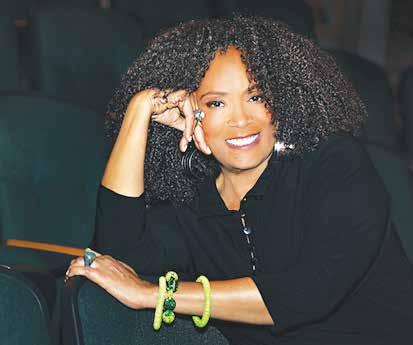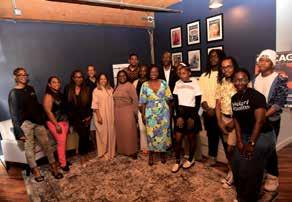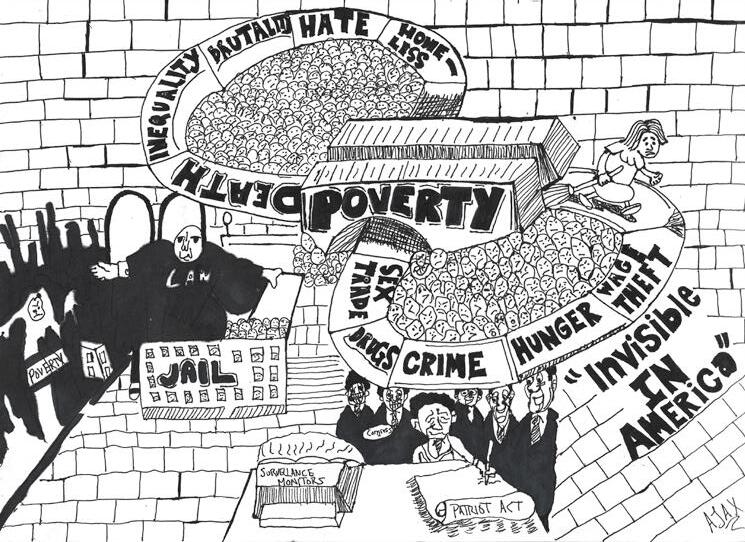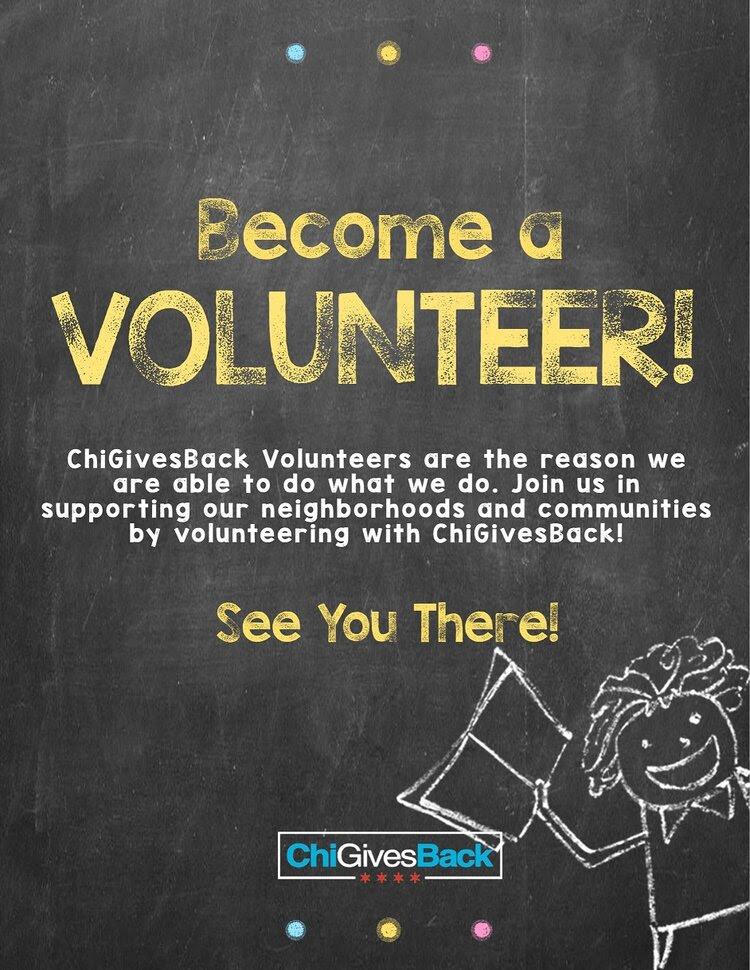

The Mensa Method


Cheryl Mainor Norman CEO & Publisher
Kai EL’ Zabar
Editor-In-Chief
Laura Miller Managing Editor
Paul Mainor Art Director
Max Blaisdell Copy Editor
Staff Writers
CL Blackburn
Zada Johnson
Dr. Mila K. Marshall
Wanda Wright
Malachi Webster
Columnists
Dr. Sanja Rickette Stinson
David Seaton
Contributors
NNPA Newswire
Mare Evans
Melanie Mainor
Ken Hare
Cover Photo Courtesy of Vic Mensa
Advertising Representation
Chicago Media Partners
Michael Tolliver (708)268-5518
Kenard Karter
Kevin Ross
Chicago News Weekly 2150 S. Canalport Ave. Suite 4-C14 Chicago, IL 60608 312. 877. 5151
Vol. 3 No 12 Thursday, July 10, 2025
Chicago News Weekly is published weekly on Thursday.
www.cnwmedia.com advertising@cnwmedia.com editorial@cnwmedia.com
Subscription $104 year


E notes
Intentional Focus

There’s a lot to be said about intentionality, and none more important than understanding undistracted energy. The longer we are able to hold a positive thought, the stronger that energy around us becomes. You have heard it time and time again about the power of focus, which requires intentionality; otherwise, you will be distracted by random thoughts and various other disruptions, including the disrupters. If you awake each morning with no vision of what your day will be like, no plans, no scheduled things to do or accomplish, then you’re left to be blown in the wind like a homeless leaf with no tree. If you’re without a foundation, you have no grounding. You have nothing to build upon. Fact: If you continue to float in the wind, you’ll look up one day at 40 years old... and wonder what happened? You may feel regret, shock, or even surprise; possibly anger, pain, and even disappointment. But here’s the ugly truth—there’s no one to blame but yourself. You are the manager of your life, no matter your circumstances. So, let’s begin there. No matter the situation within which you are born, at some point the consequence of your fate will be in your hands. If you make no effort at all, your thoughts will be without destination and therefore scatter in vast, multiple directions. And
like your thoughts, you will start something and stop, then move on this way and that way, sometimes in surprising ways from moment to moment—sometimes in seconds. This happens if we follow our thoughts without managing them. So instead, realize how truly inconsistent they are. Choose to be amazed at the result if instead you choose to apply your mind to an intentional outcome. Start small with a specific task, especially one that interests you. That desire will drive you to focus your attention, creating great power
and energy. This is what is known as pure thought, because it is undistracted—undistracted energy.

“Birds of a Feather Flock Together” is the title of a song I wrote, but it expresses a natural phenomenon—like attracts like. This you know and accept, but what you may not realize is that this principle influences all energy, including our thoughts, and this is what makes pure thought so potent. Our undistracted thoughts create a powerful magnet that draws similar energy into our personal vibrational field. Consequently, the longer we
hold positive thoughts in our minds, the greater our focus becomes, developing a laser lens that creates powerful positive energy around us, which manifests in reality. We don’t need to focus on action and controlling as much when we are surrounded by energy that draws what we want toward us. We can simply respond to the opportunities that naturally come our way. When this is the essence of our experience, we can go with the flow, knowing that we will be okay.
Imagine that pure thought is a body. It is our energy created by emotional impulse that supplies the heart which births it to life. Our thoughts/ ideas and feelings exist in tandem with one another, and they form a feedback loop—a process where the output of a system is fed back as input, creating a cycle of action and reaction through which they communicate and empower each other to manifest pure thought. Humans receive positive emotional response to pure thoughts, which enables it (the pure energy) to dance and move and breathe itself into existence.
Now, breathe and close your eyes, calm your mind, slow down your thoughts, and think peaceful thoughts of wind, water, and sunshine. Picture yourself as the wind, the water, or sunshine. Embrace it. Hold it, hold it, hold it. Now envision what you have in sight for yourself.
Kai EL’ Zabar Editor-in-Chief
Photo: Dot Ward
Empowerment
Laura Miller Managing Editor
Don’t shrink. Stand In Your Light
One of my favorite gospel hymns is “Jesus, the Light of the World.” The lyrics go:
Walk in the light, beautiful light, Come where the dew-drops of mercy are bright; Shine all around us by day and by night, Jesus, the Light of the world.
Gospel has always been a genre I turn to in hard times. It grounds me. But I also love Trap music—it balances things out. In my opinion, it creates an “in the world, but not of the world” combination that keeps me quite sane.
A few years ago, unaware of how much that hymn had shaped me, I started say-
ing things like: “If my friend is winning, then I’ll stand next to them—because the light casts just as good, and the favor will soon follow.” That wasn’t born of envy; it was born of activated optimism, and faith.
But my message today is for anyone who has watched so many people win that you’ve started to wonder if the shadows in your life are permanent. I’m not here to give you a sermon—I’m simply here to defer you to the light.
“Comparison is the thief of joy.” Those words, often attributed to Theodore Roosevelt, ring louder now than ever. We live in a time where it’s incredibly difficult not to feel the pressure of all the “humblebragging” in these internet streets. Just the other day, I saw a friend had purchased a boat. Now I don’t know about you, but if you’re like me, you’re
not quite ready for that level of luxury. But that doesn’t mean you can’t celebrate someone who is.
I’m ready to get on the docks with my friend—not because I own a boat, but because I believe the light is wider than we think. If someone’s in their winning season, get next to them. The glow reaches farther than we realize. Not to see what you can get from them, but because sometimes winners live in isolation just as much as those still searching for their path. Support and community are necessary—regardless of where you fall on the spectrum of a winning season. Being present for someone’s success doesn’t dim your own—it expands what’s possible for both of you.
In life, I also believe we should all be surrounded by three kinds of people:
those who are ahead of us financially, those who are behind us, and those who are walking beside us. The people ahead show us what’s possible. The people behind remind us how far we’ve come. And the people beside us keep us grounded. That kind of balance creates healthy community—a mirror of hope and humility. It keeps you centered, especially when your own light feels dim or delayed.
So if you’re struggling today, wondering when your big moment will come, here’s what I want you to know: the light doesn’t run out. Just because you’re not in it right now doesn’t mean you’re not on the path toward it. Stay on your path. Celebrate others. Stay close to joy. Don’t shrink. Don’t compare.
Stand in your light. It’s still yours.


There is a video circulating online that should stop every Black American in their tracks. In it, three Black boys—no older than 10, no heavier than 75 pounds—storm into a Walgreens and loot it with the precision of seasoned criminals. Their small frames barely hold up the massive bags of stolen goods they haul toward the exit. When an employee locks the door to detain them, the children explode into a barrage of profanity, threats of violence, and racial slurs hurled at the very people trying to maintain order. This isn’t a prank. It isn’t poverty. It is proof of a cultural collapse—and we must face it with brutal honesty.
We are in a death spiral. The Black community in America is no longer in crisis. We are past that. We are in freefall. The social fabric has been
David Seaton CNW Columnist
A People in Peril The Death Spiral of Black America
shredded. Our moral compass has been shattered. And what’s worse—too many of us have convinced ourselves that the fall is flight. That dysfunction is identity. That chaos is culture.
We have children who cannot read, but can recite every lyric to drill rap anthems. We have homes where a father is a myth and where motherhood has been reduced to survival, not structure. Schools that function as holding cells rather than institutions of learning. And a political class that speaks of “systemic racism” while ignoring the systemic rot eating away at the very heart of our community: us.
Let me say it plainly—we are raising wolves.
What kind of future awaits a generation of Black boys who are thieves before they hit puberty and who are terrorists in their own neighborhoods before they grow facial hair? These boys are not anomalies—
they are symptoms of a system we built with our silence, our excuses, and our refusal to confront the truth. And the media? Quiet. Because it is easier to let Black children rot in anonymity than to risk the wrath of those who would rather protect image than lives.
If you saw this same behavior from 10-year-old White kids or Asian kids, America would stop. Congress would hold hearings. Parents would be investigated. But for us? We lower the bar. We dismiss it. We invoke slavery. We scream about redlining. But none of those historical facts justify the gleeful violence, the celebrated ignorance, and the war on decency happening right now in our own backyards.
The Black community in America is sick—and not metaphorically. We are terminal. We are at the top of every list that signals decay: homicides, fatherless homes, school dropout rates, incarceration, and drug use. And we are
Chuck D, the co-founder of Public Enemy, issued a warning during an appearance on the Black Press of America’s Let It Be Known morning show, aiming at America’s cultural disconnection, political chaos, and the growing impact of artificial intelligence and online manipulation.
Chuck D, the co-founder of Public Enemy, issued a warning during an appearance on the Black Press of America’s Let It Be Known morning show, aiming at America’s cultural disconnection, political chaos, and the growing impact of artificial intelligence and online manipulation. The legendary artist
also spotlighted Public Enemy’s surprise new album, Black Sky Over the Projects: Apartment 2025, which he called a gift to longtime fans and a continuation of the group’s fight-the-power ethos. “The rock guys always seem to take care of theirs,” he said. “We created rock and roll in the first damn place, but it gets co-opted. They protect their culture. We don’t pass ours down.”
Chuck said that while touring last month with Guns N’ Roses, he saw firsthand how European audiences celebrate rock and unify around their shared identity. “They all know they’re Europeans. They had wars with each other, but they glue up together,” he said. “We got factions. And what countries do we have to back our factions?”
He continued, “Everybody on the planet Earth is saying, ‘Y’all need to be careful, you are going into that hot box.’” Public Enemy’s sixteenth studio album, released June 27 without prior announcement, was described by Chuck and Flavor Flav as “the give back.” The album was made available for free on Bandcamp for the first 72 hours and
at the bottom of every metric that measures progress: literacy, wealth, family structure, achievement. This isn’t bias. This is reality. A grim, gut-wrenching reality.
And if we don’t amputate the gangrenous parts of our culture—now—we will die as a people. Like a diseased tree, the rot will spread, and no amount of watering will bring it back. We must prune. Cut off the elements poisoning our children. Stop glorifying the lowest. Stop excusing the violent. Stop romanticizing the self-destructive. Some people in our community are beyond saving. And if we do not let them fall away, they will drag every child, every family, every hope we have into the abyss with them.
Time is running out on us. The only question left is: do we have the courage to tell the truth—and act on it—or do we perish in our silence?
THE BOOK OF DAVID National News
Chuck D to America: ‘You’re in the Hot Box’
dropped in conjunction with a live performance at London’s Royal Albert Hall. The final track, “March Madness,” tackles gun violence and school shootings. It begins with a real 9-1-1 call from a distressed teacher. “Kids supposed to have fun, none of this run for cover for your life,” Chuck said in the song. He said the song grew out of collaboration with Flavor Flav’s team, his manager Rhiannon Ellis, and Harvard students. “We had Black shootouts in high schools in the 80s that we were trying to address, and they fell on deaf ears,” he said. “It metastasized in the 90s, and now people are desensitized.”
Chuck pointed to the commercial structure of hip-hop today, saying, “The profitability of us and our drama, that also has diminishing returns… Now we got AI. Why would we be so amazed at your non-singing ass?”
On the issue of how technology is reshaping perception, he said, “Scrolling ain’t reading. Texting ain’t writing,” he declared. “People are not tuned into listening like they were 25 years ago. Their eyes are searching like Bluetooth.” He
warned that listening is now a survival skill. “If you’re not using this sense of listening and then process it, you’re going to get got.” Chuck urged Black Americans to reclaim a global mindset. “That passport will save your life and your brain,” he said. “The United States has been iso-balled. They told everybody, we’re here to protect you, and the rest of the world is bad. Don’t go nowhere, don’t think nowhere.” He said bots have infiltrated social media platforms to sow division. “There were already a million bots that got planted into the mediascape in 2015, 2016, and 2017. They were farmed to cause division,” he stated. “You got people following something that might not have even existed as a person.”
Chuck added that the new album addresses the need to teach hip-hop’s real cultural roots. “Hip hop 2025 is still the term for young Black creativity,” he remarked. “But it has to be kind of taken back, retaught, because it’s part of a 50year culture.” “If hip hop were an Olym-
Stacy M. Brown NNPA Newswire Senior National Correspondent
The Texas Holdout
Why Lone Star Protest Echoes in the Windy City
In the thick Texan summer, with humidity heavy as molasses and tempers to match, a cadre of Democratic lawmakers bolted from the Texas Statehouse and hit the road. Charter buses rumbled out of Austin, destination unknown—though, thanks to a quick round of press conferences and a couple dozen smartphones trained on departing taillights, their escape would soon become national news.
The mission: torpedo a quorum, scuttle Republican voting reforms, and ignite a political brushfire stretching far beyond state lines.
The spectacle could have played out as a footnote in the American sideshow—if not for its echoes booming through cities like Chicago, where democracy has been both forged and, at times, finessed with bigcity gusto. While Texas politics might feel as distant as a rattlesnake raiding a corn crib, the heartbeat of this standoff—the
push and pull over who votes, who counts, and who holds power—thrums in rhythm with the Windy City.
Chicago’s Own Quorum Ghosts
There’s a wry joke passed around in certain South Side circles: “If you want to understand politics, don’t watch C-SPAN—go ride the ‘L’ after a hotly contested city council vote.” Chicago knows a little something about legislative standoffs of its own. City hall has seen its share of walkouts, lockouts, and bare-knuckle deals, as aldermen have used absence—and presence—as blunt negotiating tools.
But the Texas standoff ups the ante. It’s not just legislative maneuvering; it’s democracy on the run, lawmakers-turned-fugitives bunkered down in hotel rooms, smuggling Instagram updates past the watchful eyes of state troopers. For Chicagoans, whose city remains a touch-

stone for both voting rights and machine politics, the saga draws a line connecting smoke-filled backrooms to the prairie winds of Texas.
“I see it as part of the same fight we’ve been having since Reconstruction,” says Dr. Angela Thomas, a historian at DePaul University. “When the rules are rigged and the stakes are high, sometimes you break the rulebook.”

Democracy, Disrupted
At stake in Texas was a raft of new voting restrictions— limits on mail-in ballots, stricter ID requirements, a clampdown on 24-hour and drive-through voting. And, as practical as these may sound to some, the subtext was never subtle: a move to rein in turnout after 2020’s unprecedented surge and, perhaps, recalibrate the political map for years to come.
For Chicagoans, raised on stories of impossible lines at polling places or haunted by memories of questionable ward redistricting, the headlines were more than déjà vu. They were reminders that access is everything—and that the machinery of participation is both precious and precarious.
Take Enrique Morales, a political science student at UIC. He watched the Texas story unfold over late-night study sessions and shaky Zoom calls. “It made me think: What would happen if they tried that in Illinois?” he says. “We always think we’re immune, but these moves spread. You have to stay alert.”
Fight, Flight, and Fallout
Of course, running away is never a permanent solution.
The Texas lawmakers played for time, betting that pressure and publicity would either soften GOP resolve or galvanize federal action. Back in Chicago,
where activism is as much birthright as burden, local organizers like the Chicago Votes coalition seized the moment, launching teach-ins and pop-up registration drives.
“We have our own battles,” says coalition leader Jalen Kennedy. “But seeing Texas reminded people: if your vote didn’t matter, they wouldn’t try so hard to take it away.”
Not everyone in Chicago is on one side of the see-saw, though. Some local conservatives viewed the Texas exodus as a dereliction of duty or, worse, a publicity stunt masquerading as principle. But even staunch critics secretly marveled at the spectacle—a living, breathing civics lesson, unfolding in real-time.
The Ripple Effect
From the leafy blocks of Lincoln Park to roast beef dives in Bridgeport, the story sparked deeper conversations: What tactics are fair in a system already tilted? Is it noble to break away, or a dereliction of the social contract? And, perhaps most urgently for Chicagoans, what happens when the next big legislative punch lands closer to home?
The standoff, after all, isn’t just about Texas—or some abstract constitutional wrangle. It’s about how far people will go to defend (or redefine) the rules, and how each city, each street, draws the line.
In a city where ballots have sometimes vanished, and where turnout can swing on the kind of gray, rainy morning only Chicago can deliver, the lesson is clear: vigilance is never out of style, and democracy, for all its noise and mess, is nothing if not alive.
As the dust settles in Texas, Chicagoans return to their own battlegrounds. But, somewhere amid the steely clang of the ‘L’ and the wind off Lake Michigan, the message lingers: sometimes, the most powerful act is simply refusing to show up—and making sure the world notices.
U.S. Job Growth Stalls in July, Black Unemployment Remains Elevated
The U.S. economy added just 73,000 jobs in July, continuing a three-month trend of sluggish growth, according to the latest data released Friday by the Bureau of Labor Statistics. The national unemployment rate held steady at 4.2 percent, with little movement across key sectors.
The U.S. economy added just 73,000 jobs in July, continuing a three-month trend of sluggish growth, according to the latest data released Friday by the Bureau of Labor Statistics. The national unemployment rate held steady at 4.2 percent, with little movement across key sectors. While health care and social assistance industries posted modest gains, federal government employment continued its decline, shedding 12,000 jobs in July and bringing total losses in the sector to 84,000 since January. The overall number of unemployed individuals stood at 7.2 million in July. Black workers continued to face a disproportionately high unemployment rate at 7.2 percent—nearly double the rate for white workers, which remained at 3.7 per -
pics,” he said, “I’m not totally sure that we’d come away with the gold in the United States.” Black Sky Over the Projects: Apartment 2025 was produced by Chuck, Flavor Flav, Lorrie “The LBX” Boula, and Rhiannon Rae Ellis. It features a mix of boom bap, protest funk, and political commentary. Chuck also shared his connection to baseball legend Dave Parker, who recently died before his Hall of Fame induction ceremony. “Dave Parker was one of those figures in the 70s, as me as a teenager, that I flocked to, because he was just more than playing on the field,” Chuck said. “He said from one idol to another,” referencing a signed book Parker gave him. He urged fans not to disengage. “Sense is not common, especially not in the United States. It’s common nonsense,” he said. “If you’re not listening, you’re not comprehending. And if you’re not comprehending, you’re going to get got.” u CHUCK D, Continued from page 5
cent. Hispanic workers saw a jobless rate of 5.0 percent, while Asian workers had a jobless rate of 3.9 percent.
Teenagers experienced the highest unemployment rate of any group at 15.2 percent, while adult men and women reported 4.0 percent and 3.7 percent unemployment, respectively. The labor force participation rate remained at 62.2 percent, continuing a yearlong decline of 0.5 percentage points. The employment-population ratio also changed little, standing at 59.6 percent, down 0.4 percentage points over the past year.
The number of people unemployed for 27 weeks or longer rose to 1.8 million in July, an increase of 179,000, and now accounts for nearly one-quarter of all unemployed individuals. Meanwhile, the number
of new entrants to the labor market—those looking for their first job—rose by 275,000 to 985,000. Wage growth continued modestly. Average hourly earnings for all private-sector non-farm employees increased by 12 cents to $36.44, marking a 3.9 percent increase over the past 12 months. Production and nonsupervisory workers saw average hourly wages rise by 8 cents to $31.34.
Job gains were most notable in the health care sector, which added 55,000 positions, including 34,000 in ambulatory services and 16,000 in hospitals.
Social assistance added 18,000 jobs, primarily driven by a 21,000 increase in individual and family services. But nearly all other major industries—including manufacturing, construction, retail, professional
services, and transportation— saw little to no job growth. The average workweek for all employees edged up slightly to 34.3 hours. For production and nonsupervisory workers, the workweek increased to 33.7 hours. Revisions to previous reports revealed a much weaker job market than initially reported. The May payroll number was revised down by 125,000 to 19,000 jobs, and June’s total was lowered by 133,000 to just 14,000. Combined, these adjustments wiped out 258,000 jobs from prior estimates. The BLS noted that employees on paid leave or receiving ongoing severance are still counted as employed in their surveys. The following employment report, covering August 2025, is scheduled for release on Friday, September 5.

City News
Union on the Brink When Chicago Teachers Rethink the Collective
Ms. Marie* stands at the threshold of a career spanning three decades—a span long enough to remember overhead projectors, and short enough to fear what comes after retirement. Her classroom on the Northwest Side is as much a home as anything else, a patchwork of student art and battered books that have weathered Bulls trophies and budget freezes alike.
As she boxes up her lesson plans, Marie wades into a crosscurrent shaping her final year: Chicago teachers can now, thanks to a Supreme Court decision, withdraw from their union and set sail alone. The city that once built its bones on labor solidarity is on the edge of an uncertain experiment. Why, after so long, would anyone walk away from the collective? And what happens to the fabric of public education when opting out becomes the new freedom call?
(*Marie is a pseudonym. Her name and certain identifying details have been changed to protect her privacy.)
The Backdrop: Janus and Its Aftershocks
The ball dropped in 2018, when the Supreme Court declared that public sector workers could leave their unions and skip paying dues—no more forced solidarity, for better or worse. In the years since, a slow-mounting tension—equal parts relief, suspicion, and confusion—has settled over Chicago’s classrooms.
For many, the union is gospel: it’s why they have decent wages, a bit of job secu-

rity, and a shield against the latest round of angry parents or political meddling. For others, it’s a bureaucratic labyrinth, a monolith slow to adapt as the world outside warps at TikTok speed.
Marie, who started teaching when “zoom” meant a race, not a meeting, has seen the union’s best and worst. “I’ve trained and mentored through three generations,” she says, voice wary but gentle. “Kids now—Gen Alpha, they call them—are digital in ways I can’t keep up with. Their parents expect everything, everything now, and when something goes sideways, it’s always a teacher’s fault.”
A New Kind of Calculus
The decision to leave—or stay—is less about ideology and more about survival. Younger teachers, saddled with student loans and steep rents, sometimes view union dues as one more deduction in a
paycheck that barely competes with their college friends’ corporate salaries.
“I get the solidarity,” says Darnell, a 27-year-old who teaches middle school math in Bronzeville. “But every month, I see what goes to the union, and I wonder: what if I could use that for groceries or my commute? Is it worth it?”
Even so, the grizzled veterans remember what came before collective bargaining—overwork, arbitrary firings, violence unmediated by HR departments. “When I started, you kept your mouth shut or you didn’t last,” Marie recalls. “It was the union who went to bat when principals got creative with evaluations or funding fizzled.”
The Generation Gap
Now, the chasm between new and old feels wider than ever. Marie has taught students whose parents she once disciplined for running in the halls decades
The Rent’s Still Too Damn High Surviving the Chicago Squeeze
Malachi Webster Staff Writer
Jimmy McMillan, the larger-thanlife New Yorker who bellowed that beloved phrase—”The rent is TOO damn high!”—may have receded from YouTube legend to meme folklore, but in Chicago, his battle cry is an anthem for a new generation of city-dwellers.
Pilsen, Humboldt Park, Roseland, Edgewater—step into any apartment building lobby or corner bar, and you’ll hear it: “How much?” And beneath that: “For what?” In 2024, the relentless math
of rent, groceries, and survival turns even the sunniest days grayer for the Windy City’s single artists and working families alike.
Rent Roulette: The Single Life
For 29-year-old Devon, a freelance designer living near Logan Square, every rent renewal is a roll of the dice.
“When I moved in three years ago, my one-bedroom was $1,000 a month— now it’s $1,400, and my landlord hints it’ll go higher next year.” Devon’s story is common: in most city neighbor -
hoods, median rent has crept up much faster than anyone’s salary. Combine that with utilities, internet, the inevitable bodega run, and it’s not long before “just making it” becomes an opaque luxury.
The Chicago Tribune reported that, as of early 2024, median rent for a one-bedroom citywide hovers near $1,400—a figure that, to gig workers like Devon, feels increasingly impossible. For every new cocktail bar or yoga studio, there’s a story of a lifelong resident priced out, caught in the crosshairs of progress and profit.
ago. Today’s Gen Alpha children are, in her words, “brighter but harder than ever to reach—the screens, the anxieties, the constant need for feedback.”
“Teaching used to be about patience, about being steady. Now, kids can Google me before I finish the lesson. They fact-check everything. And if they don’t like it, their TikTok says how to escalate.”
Younger teachers see both sides. Many praise union wins—smaller class sizes, parental leave—but chafe against what they see as inertia. “If the union is strong, why do I still have to coach three sports and cover lunch duty?” asks Darnell.
The Stakes: What We Lose, What We Gain
Behind the scenes, union leaders worry over the domino effect. Fewer members mean less bargaining power; less power means tougher negotiations—with impacts on everything from class size to mental health support. But some reformers argue that opting out could be the jolt needed to make unions nimbler, more responsive—a chance for evolution if not revolution.
Parents, caught in the crosswind, just want stability. For them, the union is only as good as the classroom it protects. But even parents who distrust labor politics hesitate at the thought of a city where teachers have to go it truly alone.
As Marie wipes down her desk for what might be the last time, she reflects: “They say teachers are the backbone of the city. But even backbones break, you know? I hope we figure this out before too many of us walk away—for good.”
Family Math and the Buying Mirage
Over on the West Side, the Walker family—two kids, a mortgage, and an aging Honda—faces a different challenge. Median home prices have rebounded, with the average family home now topping $325,000. For first-timers, saving up the recommended 20% down payment ($65,000+) feels Herculean, especially as groceries and gas eat into what might have been savings.
Healthy LIVING
Wood Therapy and Lymphatic Massages Can Help With Body Transformation
Most people are familiar with the talented musician Lizzo—to which there’s no argument there. What isn’t often stated is, “She’s so pretty and talented. What’s going on with her?” The question wasn’t spoken, but it often found its way into the minds of many.
Recently, as a declaration of her own personal freedom on July 3rd, the “About Damn Time” singer, who had been sharing the secrets of her intentional weight release journey of a little less than two years, revealed her transformation deserving of a standing ovation. She shared that her routine contributed to her weight loss in a big way. She released before and after images. At the end of the day, it’s about self-care, and the intentionality of that can make a difference in your body transformation if you’re serious about it.
Naturally, she shared that workouts and making nutritious food choices tailored to you, along with massages and wood therapy, are essential in achieving one’s goals.
As a celebrity, your life is no longer your own in the public’s mind. Everybody has an answer for you, unbeknownst to them what your specific issues may be.
Lizzo stated, “In light of all these magazines and blogs pushing her to take Ozempic—here’s the truth!” And as for those rumors about weight loss drugs being her secret to her transformation... The new downsized version of herself, Lizzo admits that she tried Ozempic and other GLP-1 medications—a class

of drugs primarily used to manage type 2 diabetes and/or obesity—to aid her weight loss. She ultimately decided not to go down that road.
According to medical reports, “Ozempic works because you eat less food, yeah? So, if you eat right, it makes you feel full. But if you can just do that on your own and get mind over matter, it’s the same thing.”
Lizzo revealed herself cloaked in plastic wrap inside an infrared sauna and shared candidly, “I work my ass off, training 3x a week, daily sauna & cardio, adding animal protein back into my diet, hiring a chef who helps me meal prep and keeps track of what I put into my body in a
Getting Around, Getting By
calorie deficit, cutting out sugary Starbucks, full-fat sodas, potato chips and of course cutting down alcoholic drinks.” She cut alcohol out for a while. Equipped with a sense of control, she indulges again.
And finally, the 37-year-old explained that she has turned to wood therapy (a massage technique using wooden tools to apply pressure and manipulate the body), as well as lymphatic massages (which target specific areas to move excess fluid away from tissues and toward lymph vessels and nodes to flush out toxins), to help get her body snatched. Together with a full “detox” once a month that she continues, along with an active lifestyle which includes pickleball, hiking, walking on the beach, dancing and moving her body, helps to maintain her body weight.
Lizzo admits, “There were times when I would eat so much that my stomach hurt,” she expressed. “When I was done, I would be so uncomfortable, I couldn’t breathe and wouldn’t let anyone know. I’d hide it. I had so much food noise and connected so much emotion to food. If I were sad, anxious, stressed, or working a lot, I would snack and just eat constantly.” Hopefully she’s left that in the past as she shared, “I’ve gained a sense of self. I’ve gained a lifestyle that I really love and I’m like, ‘I can maintain this.’” What about you? Are you struggling with your weight? Are you ready to be your best self? If you are, make it your priority to see a doctor and share your concerns and desire to change your health status. If you’re diabetic and/or have high blood pressure, ask what your options are. If you have other issues, investigate with your physician and start your journey to your best self.
But even for those lucky enough to buy, Chicagoland’s infamous property taxes can sting. Rates often hit 2% or higher, tacking on thousands per year even as schools and services scramble for funding. Neighbors trade tips on how to appeal assessments, but the impact is felt whether you’re in Naperville or Norwood Park.
Meanwhile, affordability is relative: food inflation has pushed the average monthly household grocery bill for a family of four over $1,000, and with citywide transportation hikes, monthly CTA passes or Metra tickets are just another line on a swelling ledger.
Ask any Chicagoan about public transit and you’ll get a knowing sigh. The CTA, once a badge of urban convenience, now feels like equal parts necessity and gamble. Fares have edged up, and stretches of “track work” leave commuters stretching their patience. For those with long commutes or unconventional shifts, costs mount—time, energy, and yes, those little dollars that leak out on Ubers when the Blue Line goes down. Accessibility isn’t just about riding the train; it’s about reaching affordable grocery stores, medical offices, or even parks. South and West Side residents often pay a premium in cab fare or wasted hours, and new families moving into the city

Cover Story
Laura Miller Managing Editor

The Mensa Method
Not the loudest — just the clearest. Vic Mensa speaks with weight, walks with purpose, and writes like his lineage depends on it.
There’s a tradition among Black men that rarely makes headlines — a sacred lineage of speakers, thinkers, and teachers. Men of great words. Not always the loudest in the room, but the ones who speak with so much weight and presence, you stop what you’re doing just to hear them finish a sentence. Some are preachers on sidewalks. Others are scholars with degrees. All of them know how to move people with just their voice.
Vic Mensa is somewhere in the middle — right between the State Street preacher shouting scripture and the tenured professor defending disserta -
tions. And I mean that literally. In our conversation, I joked that he’s sitting right at the midpoint between the guy on the corner with the megaphone and his father, who actually gives people their PhDs. Not to measure one against the other, but to say: each captivates differently. Vic is one of the rare few who can do both — profound enough to stand at a podium, and real enough to spit truth on the sidewalk. He laughed when I said it, and then reminded me: “Malcolm X was a sidewalk preacher too.” Enough said.
You may know Vic Mensa as a rebel. A rapper. An activist. A voice from the South Side with bars that can go from protest to poetry in the same verse. A hip-hop kid who came up in Chicago’s creative wave — the one who took risks, spoke up, sometimes wilded out, and never blended in. You may know the version of him that made headlines, or his collaborations with Kanye, or the one who was once caught up in it all. But
that’s not the man you meet now.
“There’s so much self-discovery that has to happen in the dark,” Vic says. “That silence gave me purpose.”
This version of Vic Mensa is steadier. Still sharp. Still passionate. But rooted now. He’s made deliberate choices — sobriety, Islam, fatherhood — and walked away from the traditional structure of the music industry to build something of his own. These aren’t isolated life decisions. They’re threads in the same cloth. And when you ask what holds it all together, he gives you the answer without blinking: gratitude.
“Gratitude is the key to blessings,” he says. “That’s something I whisper in my son’s ear all the time.”
He doesn’t just mean it as a nice idea. For Vic, gratitude is a daily discipline — a practice that anchors everything else. It shows up in his prayers, his dhikr, his fasting. In his restraint. In his pace. Once you understand that, you begin to understand why his music sounds different
now. Why his posts read like philosophy. Why he’s less interested in viral hits and more concerned with the kind of impact you can’t chart.
On Clarity
“Islam is very intrinsically connected to sobriety,” he explains. “It was the right time to stop drinking — and at the same time, I started practicing Islam. That gave me tools. I was also in a twelve-step program. And fatherhood? That’s the ultimate mirror. It forces you to ask: does this help or hurt my child? That question alone clears a lot of bullshit.”
Healing, he adds, hasn’t been linear. “Healing isn’t a straight line. And sometimes it’s in the same room as the hurt.”
His social media presence reflects this shift. You won’t catch Vic chasing trends. His posts feel more like thoughts he’s been carrying for a while.
“All the stuff I post — that’s just what I’m already thinking,” he shrugs. “Conversations I’m having with Melanie (my
partner), my dad, my friends. It’s not content. It’s real life.”
Access and Awareness
Everything Vic thought he understood about purpose sharpened one terrifying weekend — a hospital visit with his newborn son that cracked him wide open.
“We had a really bad hospital scare this last weekend,” he recalls. “I had to go into the hospital with the baby on Saturday morning, basically, and didn’t leave until Monday night.”
It shook him. But it also opened his eyes to the bigger picture — one of spiritual anchoring, global awareness, and fatherhood’s quiet fire.
“It was so frightening. And it’s so emotional. And so taxing. But ultimately, I had to recognize that... as difficult as the experience was, it was such an amazing example of God at work.”
What grounded him wasn’t luck. It was access — and the awareness that many don’t have it.
“I have resource. I have access to hospitals and pediatricians and high-level intensive healthcare. There’s so many children in so many places in the world right now that are passing away from much less, you know?”
“There’s always something to be grateful for. Understand that gratitude is the key that opens the door to blessing. And being grateful for the ever-present blessings in your life invites more of them to exist.”
Aiming for Interdependence
Vic has seen both sides of the industry — the co-signs, the big stage performances, the major label structure. But over time, he started to notice how easily the machine can mute an artist’s instincts.
“You start thinking, ‘The label’s got a department for that.’ But now you’re disconnected from your own ideas,” he says. “You stop trusting yourself.”
That realization was a turning point. He didn’t want to keep outsourcing his voice. He didn’t want to wait for budget approvals or campaign rollouts to say something real. So he walked away from the comfort of that model — and toward something much riskier.
“The music industry is an inequitable structure. And that’s not even necessarily the fault of any one person. It’s just the way it’s been built.”
He also realized how deeply his selfworth had been tied to productivity. “I had to shed this mindset that I’m only valuable if I’m producing something. That’s capitalism talking. That’s not who I really am.”
That’s what led to Sundiata, his latest EP — sold exclusively on his own website. No middlemen. No algorithms. No filters between him and his listeners.
“I’m not trying to be fully independent. I’m aiming for interdependence,” he explains. “We all collaborate. The difference is whether you’re doing it from a place of agency... or a place of dependency.”
Going this route meant learning fast.

Marketing. Merch. Website design. Digital distribution. All of it.
“It’s like a crash course. You’re forced to figure it out. But there’s value in that — because now, I’m not guessing anymore. I’m making informed choices.”
When Destiny & Inspiration Find You
Before he knew his family tree traced back to the Sahel, Vic had already named his son Mansa Musa Mensa. Long before he confirmed the bloodline, something in him was already reaching for it.
“I had the name ‘Mansa Musa Mensa’ in my head for a long time — long before my son was born. I thought it was just interesting. Just inspiration. I didn’t think I had a personal connection to it. My family’s from Ghana, not Mali or Senegal.”
That changed after a conversation with his father.
“He told me his mother’s father had the name Kamara. And he was always wondering, where does Kamara come from? He’d been seeking those answers his whole life — and eventually he found out that Kamara is a name from the Sahel. From the north of Ghana, near

Burkina Faso.”
“So actually, that’s where we’re from too. That means my family history comes from the area of Mansa Musa. And in its own way... that history just found me.”
But if Mansa Musa represents the future — his son, his namesake — then Sundiata represents the beginning. The foundation. And not just historically.
“Sundiata was the founder of the Mali Empire. He came before Mansa Musa. That’s important — because in a way, that’s how I think about legacy too. You build something not just for yourself, but for who comes next.”
For Vic, Sundiata also symbolizes a personal return — a reclaiming of the thing he created long before fatherhood.
Music was his first love. His first responsibility. His first born. And taking ownership of that again — in full, on his own terms — is part of why Sundiata had to exist outside the system.
“That’s destiny. That’s genetic memory. Sometimes it just finds you. You may
not even know that you’re landing where you started.”
“You think you’re chasing inspiration... but really, your ancestors are chasing you.”
The Spoken Word Is Still His Weapon
“People tell me they don’t even know my music — but they watch all my interviews. And I’m cool with that,” Vic smiles. “Because my words? That’s always been my superpower.”
For him, activism and art were never separate. “To me, it’s all part of the same thing — the words, the music, the mission. I don’t separate them.”
From State Street battles to quiet moments of reflection, Vic’s voice still hits. But it’s not hitting to provoke. It’s here to build something.
Not the kind of voice that yells to be heard.
The kind that speaks so clearly, you lean in.
Flowers Shall Grow in Rain
On August 2, 2025, Flowers Shall Grow in Rain premiered at Hatch 41 in Chicago, IL. The sold-out, standing-room-only event marked the debut of 20-year-old Journey Aliah Powell as a creative director, presenting her senior thesis for Spelman College, where she is completing a degree in English.
Conceived as a multidisciplinary fashion showcase, the event brought together original design, spoken word poetry, live music, and immersive performance art to explore the emotional landscape of personal growth. Under Powell’s direction, Flowers Shall Grow in Rain unfolded as a nonlinear narrative rooted in both literary and visual storytelling.
The evening featured original fashion collections by designers Bug Hemphill, Tommie Ibiza Anderson, Megan Wong, Wyland Harris, Nia White, and Khalese Alexander. Together, they helped bring to life Powell’s vision of transformation—using color, texture, silhouette, and sound to reflect the discomfort and beauty of becoming.
The show was more than a runway presentation. Through poetic narration, intentional staging, and a carefully designed soundscape, the space was transformed into a dreamlike environment where each scene represented a chapter in a broader story of healing. Powell, serving as both writer and director, drew heavily from her background in literature to structure the experience with the depth and rhythm of a spoken word performance.
Flowers Shall Grow in Rain stood as a creative thesis—but also as a public declaration. It reflected the complexity of growth, the necessity of vulnerability, and the belief that even in the midst of storms, something beautiful is always in bloom.









u CITY NEWS, Continued from page 9
chase elusive “walkable neighborhoods,” a dream that can double the price per square foot.
Shop Till You (Almost) Drop
Inflation has turned shopping into a contact sport. Avocados, milk, and bread all cost more than national averages, while sales tax—Chicago’s is among the nation’s highest—squeezes every checkout line. For working moms like Alicia
on the South Side, even a weekly Target run is strategic: “I buy in bulk, time coupons, shop across four stores. You gotta hustle.”
For single working adults, basics like health insurance or renters insurance— not to mention the ever-upward creep of streaming subscriptions, car share apps, gym memberships—eat into what was once fun money, leaving little left for spontaneous nights out or saving for emergencies.
Hope on the Horizon?
All is not lost in the “city of big shoulders.” Organizers across neighborhoods run mutual aid pantries; tenants’ unions fight relentless rent increases. Some newer developers, prodded by aldermen and activists, carve out affordable units or work with city planners to promote mixed-income housing.
From Ukrainian Village to Hyde Park, neighbors look out for one another. Community gardens proliferate, block clubs organize, and resistance takes the
form of shared childcare, impromptu meals, or simply holding the line—refusing to leave even when leaving feels inevitable.
In the end, what keeps Chicago alive isn’t the cheapness of living, but the richness of its people: artists, families, teachers, advocates—all battling the squeeze together. The rent may be too damn high, but so is the spirit. And in a city this stubborn, that may prove just enough.
Photo Credit: He Shoots Lyfe
a.i. The Answer Is
In today’s world of media blitz, there is a greater probability of unchecked facts being reported as information. People have the freedom to say what they think, whether grounded in facts and truth or figments of their imagination or hearsay. For this reason, it is increasingly important that you listen and fact-check both what you hear and what you read. Be no one’s fool. Be informed. As we witness the reality of Kellyanne Conway’s “alternative facts” world, we must be responsible for what we know to be true and be able to distinguish and identify the spreaders of untruths.
The following words share in their meanings mainly the element of not telling the facts: liar, perjurer, deceiver, fabricator, falsifier, deluder, con artist, promoter, misleader. There are more, but this is a good start for you to famil-
iarize yourself with their meanings. These terms all describe someone who misrepresents the truth, but they have distinct nuances. A liar is a general term for anyone who tells a lie. A deceiver is someone who intentionally causes another to believe something untrue, often through subtle actions or manipulation rather than a direct lie. A misleader directs someone toward a wrong conclusion or action, usually by providing incorrect information. A fabricator creates or invents something that is false, such as a story or an excuse. A falsifier changes or distorts facts, documents, or data to make them appear true. A deluder is someone who leads another person into a mistaken belief or state of mind, often through persuasion. A perjurer is a specific type of liar who intentionally provides false testimony while under oath in a legal
proceeding. A con artist is a deceiver who uses charm and fraud to gain a person’s confidence to swindle them out of money or possessions. A promoter is a person who publicizes or sells a product, service, or idea. While not always negative, a promoter can become a misleader or con artist if they intentionally exaggerate or falsify claims.
Interconnection
The words are interconnected in that they all relate to the act of intentionally presenting something as true when it is not. The terms can be seen as a spectrum, ranging from the general act of lying to highly specific, legally defined offenses.
- Liar is the most basic and encompassing term. All the others are, in essence, a type of liar.
- Deceiver and misleader are broader
categories of liars who aim to mislead. A fabricator or falsifier might be a deceiver, but their specific method is to create or alter false information.
- Fabricator and falsifier are specific methods of lying. A perjurer might be a falsifier of facts, but only in a court of law.
Perjurer and con artist are specific roles with a legal or transactional context. A perjurer lies under oath, which is a criminal offense. A con artist lies as part of a scam to defraud someone.
- Deluder is a more psychological term, focusing on the effect of the lie— leading someone into a mistaken state of mind.
- Promoter is the outlier. While a promoter can engage in deception, it’s not inherent to their role. Their actions only become interconnected with the other terms if they cross the line into intentional misrepresentation.


Jeff Beckham Rings NASDAQ Bell with Reach Pathways
Former cover hero Jeffery Beckham Jr., Co-CEO of Reach Pathways and CEO of Chicago Scholars, marked a milestone moment this past Monday as he rang the closing bell at NASDAQ in New York City. Representing Reach Pathways—a mission-driven ed-tech platform co-founded with Brooke McKean—Beckham stood alongside his team in Times Square, celebrating a victory not just for their venture, but for every young dreamer with humble beginnings.
Beckham captured the moment on Instagram, writing:
“From the South Side of Chicago to ringing the NASDAQ closing bell. #GodIsGood
We lit up Times Square today not just for us, but for every young dreamer with big vision and humble beginnings. Every @chicagoscholars student and every brown kid who’s had a dream that felt impossible…
This is what happens when purpose meets perseverance—and the right team.
This is for the culture. This is for the city. We belong here—and we’re just getting started.”
Reach Pathways, launched in 2022 as a

spin-off of Chicago Scholars, aims to close equity gaps in college and career access through immersive, youth-centered technology. The NASDAQ bell ringing marked
both a celebration and a call to action—to continue investing in innovation, equity, and access for the next generation of leaders.

CNW Hosts the BlackPRint Chicago Campaign to start Black Business Month
The BlackPRint Chicago Campaign, launched by Christi Love of With an Eye PR, marked National Black Business Month with a powerful press conference at the Chicago News Weekly office in Pilsen.
Entrepreneurs, youth leaders, and policymakers gathered to spotlight the importance of protecting opportunities for small and Black-owned businesses—especially as national support for Diversity, Equity, and Inclusion (DEI) programs wanes.


Illinois State Rep. LaShawn K. Ford (7th District) stressed the need for policies that provide fair access to capital, contracts, and support. “Local businesses are the backbone of our neighborhoods,” he said. The event also featured a roundtable with seasoned entrepreneurs and interns from Chicago News Weekly, offering mentorship and real talk about overcom-

ing systemic barriers.
“The BlackPRint is more than a spotlight—it’s a blueprint for economic equity,” said Love. “We’re focused on action, access, and accountability.”
As the campaign continues throughout
August, organizers aim to uplift entrepreneurs citywide through events, digital storytelling, and collaboration. The message is clear: inclusive economic growth must be protected—and it starts by supporting local businesses year-round.
Around Town
CNW Staff Report
The Support Group and Tim Hardaway Sr. Champion Chicago Youth at Safe Summer Event
The Support Group recently hosted its Safe Summer Campaign event at Walter Dyett High School in Chicago, where NBA Hall of Famer Tim Hardaway Sr. returned to his hometown to present scholarships to 11 exceptional students from the Advancing Young Leaders program, alongside Bennie Henry, Executive Director of The Support Group. The students were recognized with $1,000 and $500 scholarships for their leadership, resilience, and commitment to community. Later that day, Hardaway Sr. threw out the ceremonial first pitch at the Crosstown Classic between the White Sox and Cubs at Guaranteed Rate Field, joined by hip hop icons Do or Die, creating a memorable celebration of youth achievement and Chicago pride.






Staff Report
Spike Lee and Denzel Washington Reunite in Highest 2 Lowest A modern thriller with a soul-powered soundtrack and breakout talent Aiyana-Lee
CNW Staff Report
Legendary filmmaker Spike Lee and Academy Award-winning actor Denzel Washington are back together for their fifth collaboration in Highest 2 Lowest, a new A24 and Apple Original Films release hitting theaters August 15. The film reimagines Akira Kurosawa’s 1963 classic High and Low— this time set in modern-day New York City with the highstakes tension of the music business as its backdrop.
Washington plays a titan of the industry—a revered music executive with a reputation for discovering talent others overlook. But when he becomes the

target of a calculated ransom plot, he’s forced into a moral crisis that challenges his legacy, relationships, and values. The story plays out in a world where power, creativity, and vulnerability collide.
Aiyana-Lee: The Film’s Emotional Core
At the heart of the film, both musically and narratively, is Aiyana-Lee—a rising British-American singer-songwriter and producer who delivers the film’s title track, “Highest 2 Lowest”. She also stars in the film as one of the fresh talents rediscovered by Washington’s character, representing the very
kind of raw artistry he once championed.
Aiyana-Lee describes the song as deeply personal:
“‘Highest to Lowest’ is a soulful, triumphant journey. One rooted in vulnerability and hope,” she says. “It’s a song and story close to my heart that proves even in the darkest moments, light always finds its way through.”
The 23-year-old artist is known for blending classic soul influences with a modern edge—drawing comparisons to powerhouses like Amy WineENTERTAINMENT, Continued on page 16 u
Photos: John “NuNu” Zomot
Voices of Our Youth Avery Jackson CNW Intern






u ENTERTAINMENT, Continued from page 15
house and Jazmine Sullivan. Her dual role as both performer and actress marks a major breakout, and her voice becomes one of the emotional anchors of the film.

A Curated Soundtrack with a Purpose
Spike Lee personally curated the film’s soundtrack with a clear vision: elevate powerful, genre-defying Black voices. In addition to Aiyana-Lee, the album features original music from A$AP Rocky, Jensen McRae, and the acclaimed Fergus McCreadie Trio, fusing jazz, hip-hop, soul, and orchestral elements.
The original score was composed by Howard Drossin, and the entire soundtrack is executive produced by Lee himself.
“I First Saw And Heard Aiyanna, Jensen And The Fergus McCreadie Trio On INSTAGRAM,” Lee noted. “My EYES And EARS Don’t LIE. It’s Da TRUTH, RUTH. Ya-Dig? SHO-NUFF.”
The soundtrack drops the same day as the film’s release—August 15—and promises to stand alone as a listening experience rooted in emotion, rhythm, and storytelling.
The Pen of Truth M
aya Jennings had always been an incisive thinker. From the moment she stepped into the bustling newsroom of The Sentinel, it was clear she wasn’t one to simply conform. While others reworded press releases and softened headlines to avoid backlash, Maya cut through spin with the sharpness of a scalpel.
Her reputation as a maverick journalist grew quickly. She went after stories others feared to touch—corporate cover-ups, political scandals, and social injustices so egregious they shook communities to their core. What set her apart wasn’t just her courage, but her unflinching candor. She didn’t embellish. She didn’t manipulate. She told the truth, plainly and powerfully.
One of her most controversial pieces exposed a city council’s attempt to quietly abrogate tenants’ rights laws in favor of a luxury development scheme. Maya’s exposé sparked protests, lawsuits, and eventually, resignations.
Despite the threats, the hate mail, and the industry pressure to “play nice,” Maya never backed down. To her, journalism wasn’t about fitting in. It was about standing out—when it mattered most.
And in a world that often rewards silence, Maya Jennings succeeded by raising her voice.
A Film That Meets the Moment
With Highest 2 Lowest, Lee and Washington are not just reviving a classic—they’re reframing it for today’s cultural and musical landscape. The film explores what it means to stay connected to your roots, the costs of success, and the importance of rediscovering truth through art.
Whether you come for the high-stakes drama, the music, or the powerhouse performances, Highest 2 Lowest offers something that resonates across generations.


No Heat Needed White Bean and Spinach Caprese Salad
I’m all for a wonderful hot summer full of fun, laughter and freedom to move fluidly. That requires us to be light and ready to move. Eating light in the summer is the best way to go—healthy, happy and strong. This easy white bean and spinach caprese salad features the classic combination of juicy tomatoes, creamy mozzarella, fragrant basil and tangy balsamic vinegar, adding tender white beans with fresh baby spinach to the mix. This is not only a nutritious meal but tasty and filling yet light, perfect for your summer on-themove activities.
If you can’t find mozzarella pearls, just cut or tear a fresh ball of mozzarella into bite-size pieces instead and keep it moving. Another choice: If you’re like me and like your salad with a little kick, try swapping out the spinach for arugula, which adds that peppery spice touch. Yes!

1 (15-ounce) can no-salt-added white beans, rinsed
1 (10-ounce) container cherry tomatoes, halved
1 cup mozzarella pearls
1/3 cup chopped fresh basil, plus more for garnish
Directions
1. Whisk vinegar, oil, mustard, salt and pepper together in a large bowl. Add spinach, beans, tomatoes, mozzarella and basil; toss to combine. Garnish with more fresh basil, if desired.
C.L. Blackburn Staff Writer
And That’s What Style Is
Iwas captivated by a recent Vogue article addressing Rihanna’s embrace of over-the-top dressing and how she knows that there’s “no such thing as too many accessories,” and she also knows there’s nothing better than a classic white button-up and jeans. Wow! If that wasn’t my frame of reference. I laughed with a huge smile on my face when Vogue quoted Coco Chanel: “Before you leave the house, look in the mirror and take one thing off.”
It was not foreign to young Black girls growing up observing our mothers getting ready for special affairs. They primp and primp and primp some more, layering and layering their accessories to accent and adorn themselves with beauty, accentuating their natural assets.
The article told of Rihanna being spotted in Beverly Hills wearing a classic white button-up and single-cuffed blue jeans accessorized by jewelry to elevate her ensemble from simple to sensational. This excited me, making my heart race with joy—the expression of Black creativity.
I have always understood that creativity is beyond playing an instrument, singing a song, writing music, dancing, choreography, painting, drawing, and writing. It’s how you put your colors together, the shapes and forms of the fabric and how you drape them across your body. The rest is the accent of what you have crafted as an ensemble, which includes it all: the shoes, the purse, the headdress, the hair, the belt, scarves, shawls, gloves, glasses, sunglasses, and the jewelry!
You are the masterpiece and everything else accents you! This is what Rihanna has mastered. She wears the adornment, and it adds to all that she sees herself as being. Her choice of clothing and all that creates a look is an extension of who she sees herself being!
According to the article, Rihanna embraced what is trendy in her third-trimester style in a pair of snakeskin printed kitten heel flip-flops from Amina Muaddi. She chose to punctuate the look with a mix of prints, covering her hair in a silk Valentino V-print scarf and adding a pair


of oversized Italian sunglasses. And she wasn’t finished. She went full out, stacking heaps of bracelets, a large signet ring, and strings of pearls around her neck, embracing Old Hollywood glamour and bringing it into 2025 with her modern
denim and footwear choices. It must be stated that the simplicity of a classic white button-up and jeans says it all as a canvas, and Rihanna mastered the creation of “a look.” And that’s what style is all about.

